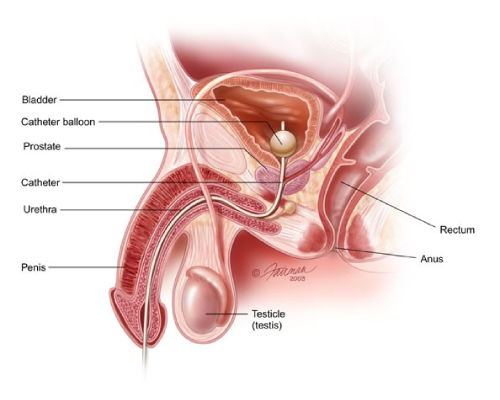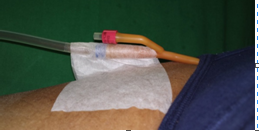NOTE
The following problems are expected and these are normal
- Dribbling of urine through the normal passage, while passing motion/straining
- Because of the catheter, you will have some abnormal sensations in the area
- Minimal secretions around the catheter exit site
CONTACT YOUR UROLOGIST IF
- Fever more than 101OF
- Lower abdominal pain
- No/little urine flows into the bag over a period of 3 hours or there is significant leakage of urine around the catheter
- Spontaneous slipping out of catheter
- Urine is stained with blood
HAND HYGIENE
Wash hands thoroughly with soap and water, before and after handling your catheter and drainage bag.
DAILY BATH
Patients with Foley:-
In males: If you have a foreskin (uncircumcised), during a bath, pull back the foreskin, clean the area with soap and water and pull it front to normal position.
In females: Separate the skin folds (labia) and clean with soap and water.
Patients with SPC:-
Clean the skin at the catheter exit site with soap and water daily.
PLASTER APPLICATION
Change the plaster (3” micropore) securing the catheter daily. Application of plaster is done after leaving a slack on the catheter tubing, to avoid its direct contact with skin, which may result in allergy/irritation. You can apply the plaster either on your right or left thigh (this will be taught to you by our clinical nurse) at the ‘Y‘junction in case of Foley catheter (as shown in the picture below) or at catheter-urosac bag junction in case of other catheters. You may apply the plaster at a slightly higher or lower position everyday to prevent skin peeling.
CLOTHES
You can wear your undergarments and regular dresses like pants/saree/chudidhar etc. Keep the bag secured inside your clothing by hanging it from a string tied around your waist, so as to conceal it from outside.
DRAINAGE BAG
- Never disconnect the bag from the Foley catheter
- Always empty the drainage bag when it is half full
- If urine output is to be measured, use a calibrated container
- Do not make any contact between the tip of the bag outlet & commode/container
- Always keep your bag below the level of bladder to facilitate urine drainage by gravity and to prevent the back flow of urine into the bladder
DIFFERENT POSITIONS
- Sitting/Walking/Driving: Apply a string around your waist and hook the bag on it
- Sleeping on cot- Hang it beside the cot [Note: - When getting up from the lying down position, make sure the drainage bag is unhooked from the cot before getting out of the bed.]
- Sleeping on floor- Keep it on the floor near you
- If your drainage bag is a leg bag, it can be strapped on your leg (no need for string around waist)
OTHER INSTRUCTIONS
- Do not apply any dressing, ointment or powder at the catheter insertion site
- If your catheter has to be kept for long time, the catheter and bag needs to be changed every month. However, if your drainage bag is leaking it may be changed as and when required


